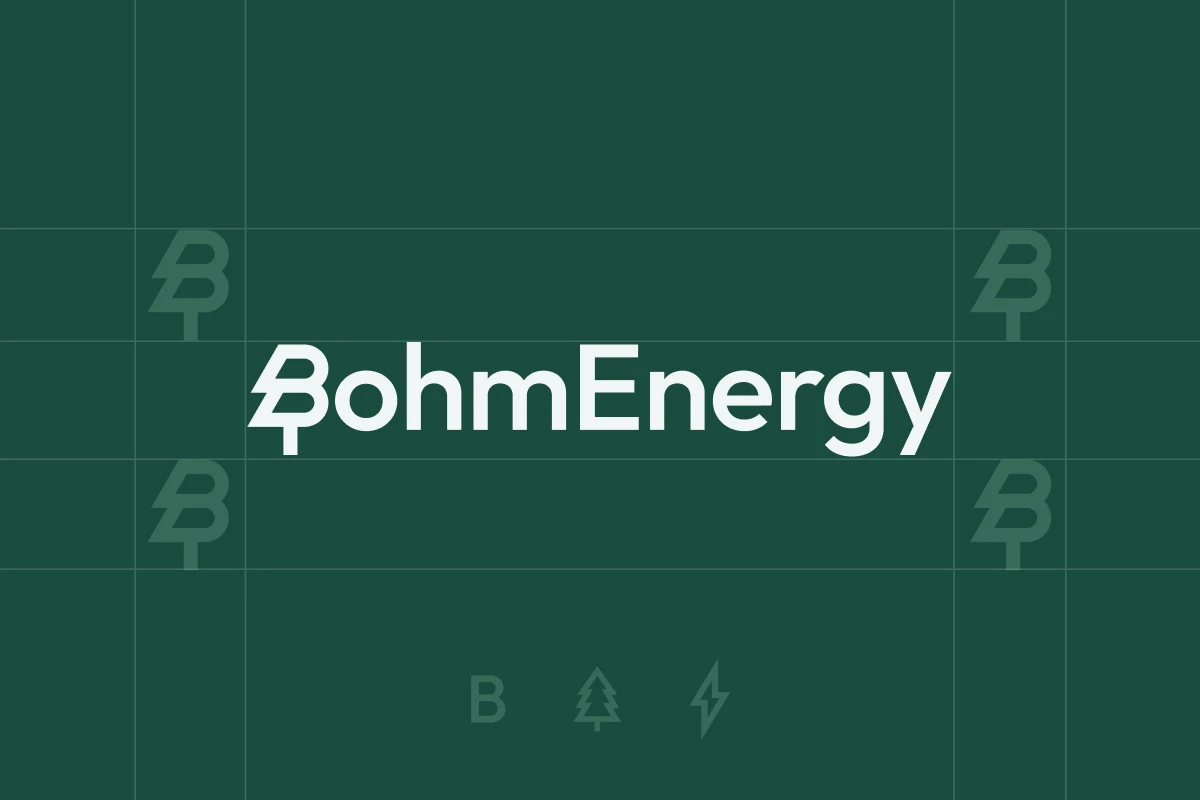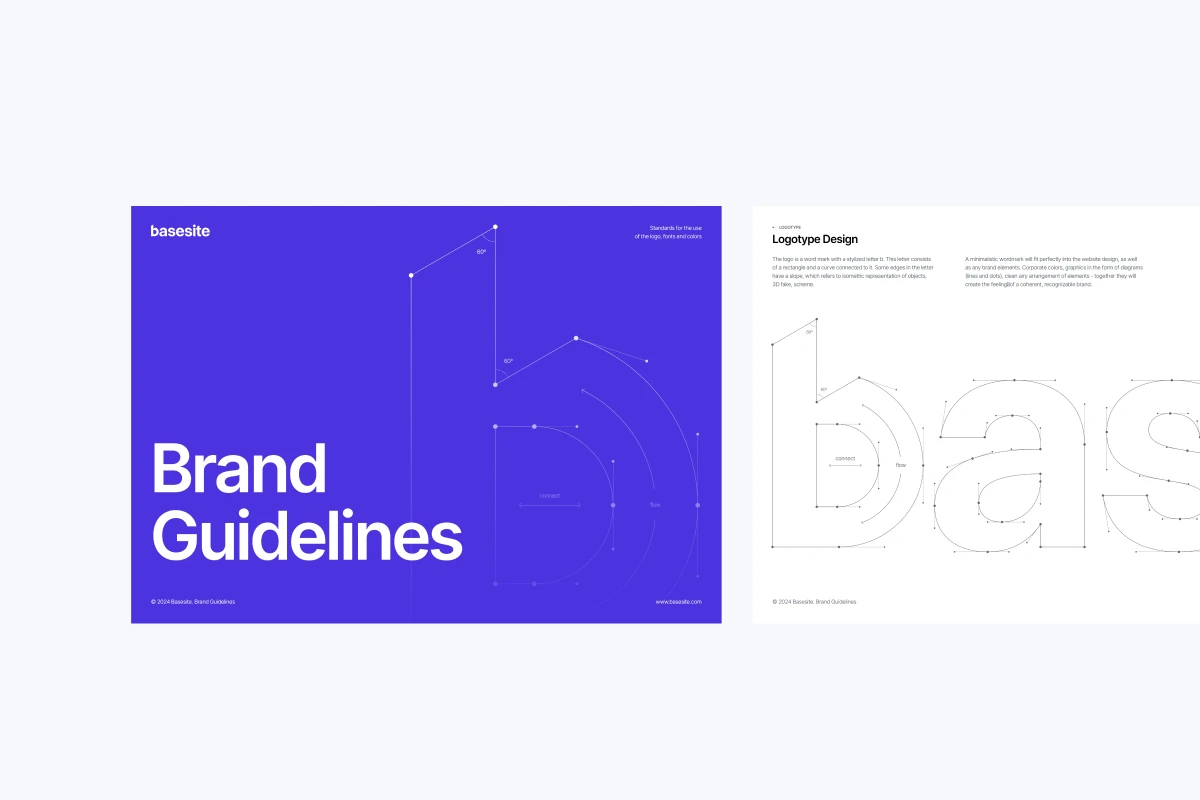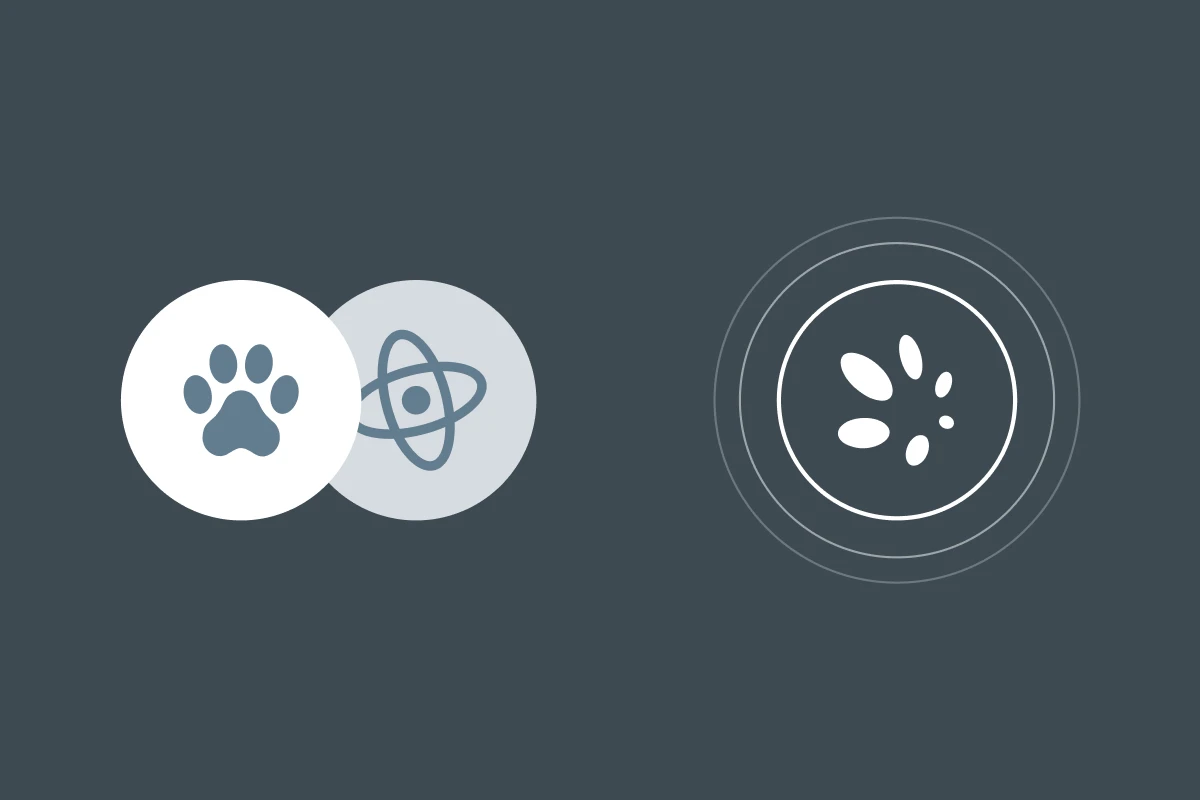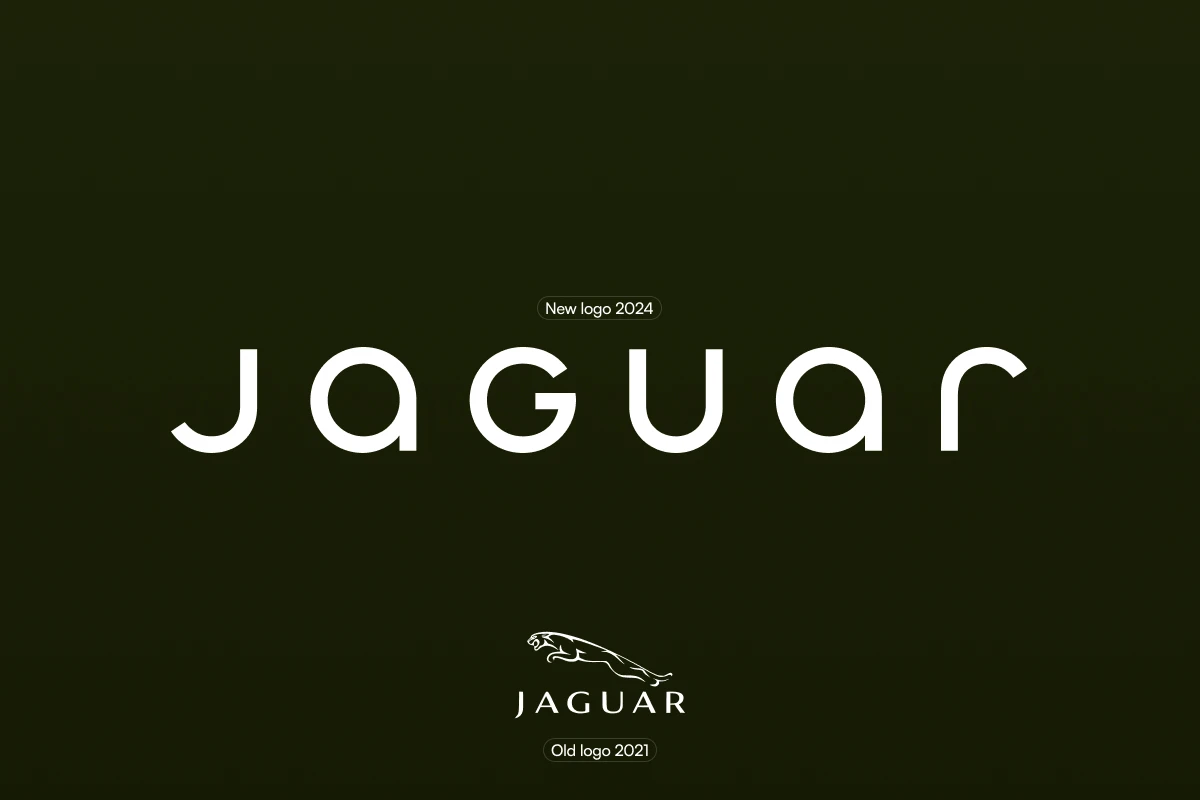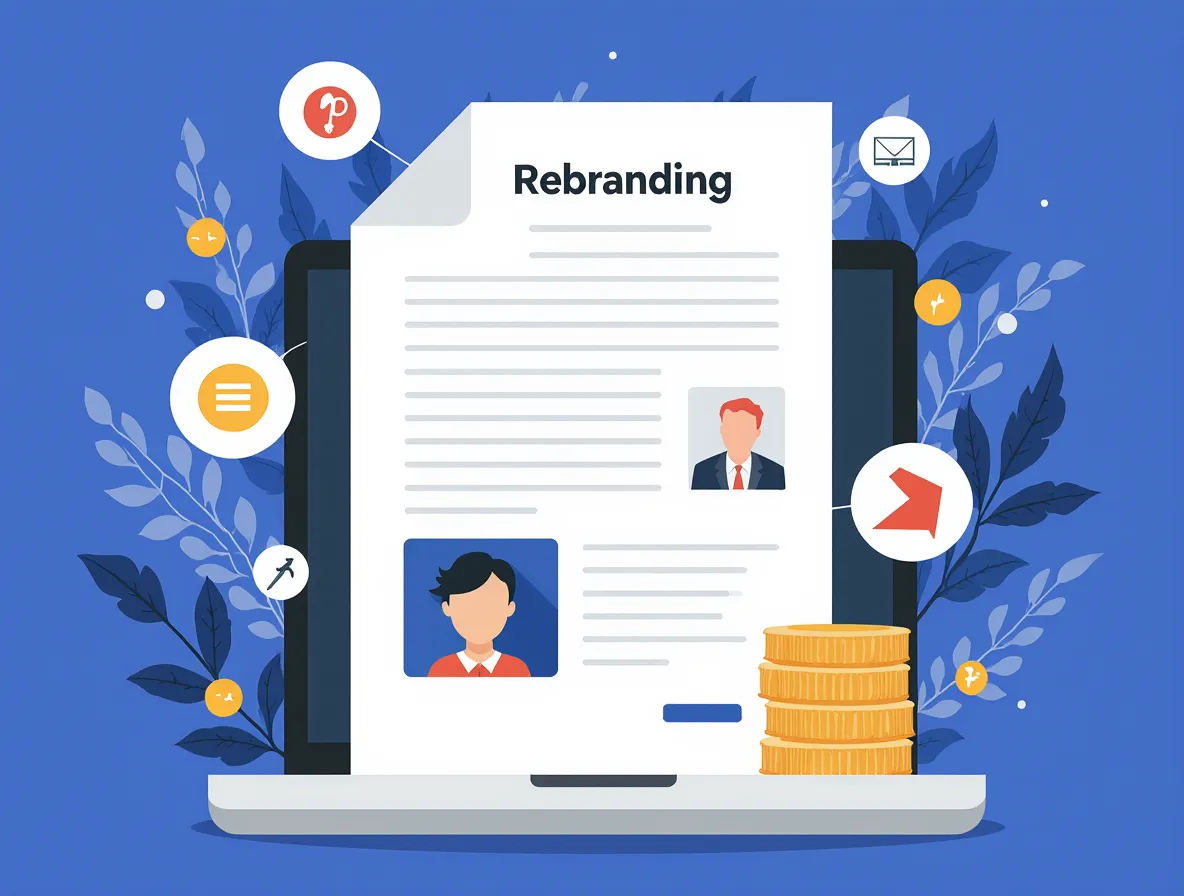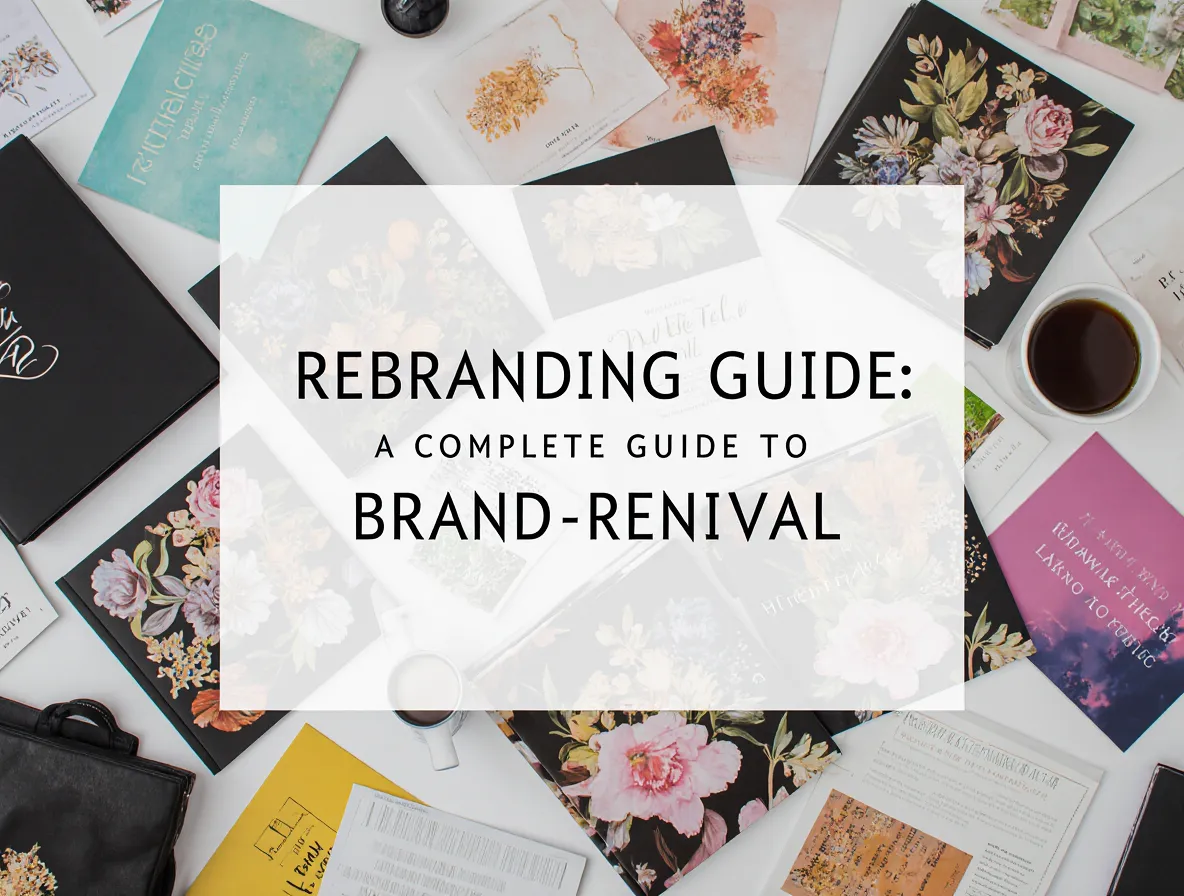Every month, 3,000+ companies search for guidance on rebranding vs brand refresh decisions. Most make the wrong choice. They either waste money on unnecessary complete rebrands or patch outdated brands with cosmetic fixes that fail to solve core problems.
The stakes are real. McKinsey research shows that 73% of companies that rebrand incorrectly lose market share within 18 months. Meanwhile, properly executed brand refreshes increase customer engagement by an average of 23% while costing 60% less than full rebrands.
Deciding on the scale of change for your brand? Our rebranding agency Celerart specializes in rebranding solutions that align with your business goals and vision.
What's the difference between rebranding and brand refresh?
A brand refresh vs rebrand decision starts with understanding fundamental distinctions. Brand refresh updates visual elements and messaging while preserving your core brand identity and market positioning.
You keep your company name, fundamental value proposition, and customer relationships intact. Changes focus on logo design, color palette, typography, website layout, and marketing materials. The goal is modernization, not transformation.
Netflix provides a textbook example. The company evolved from red-text-on-black to clean, modern typography. Customers never questioned the brand's identity, but the updated look felt contemporary and premium.
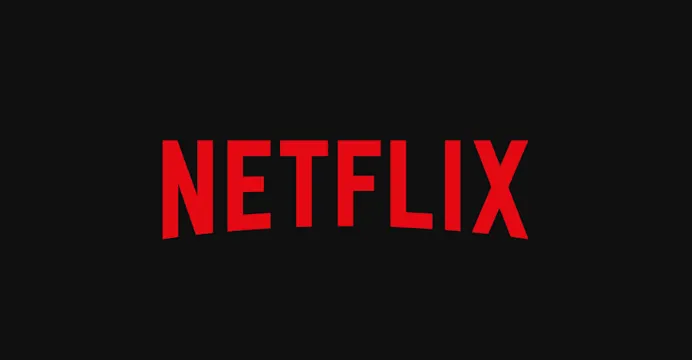
Brand refreshes work when your positioning strategy succeeds but your execution appears dated. Customer surveys should show strong brand recognition and positive associations. If people understand what you do and trust your company, refreshing visual elements can reinvigorate interest without disrupting established relationships.
Brand revitalization typically takes 2-4 months and costs $15,000-$75,000 for most businesses. You can test changes incrementally, adjusting based on customer feedback before full implementation.
Understanding the difference between rebranding and brand refresh helps prevent costly mistakes. While refreshes modernize existing brand elements, complete rebrands transform your entire identity from foundation up.
See how a brand refresh keeps recognition intact while making your identity feel current.
{{mike-quote-1}}
When to choose rebranding or brand refresh strategies
Complete rebranding replaces your entire brand identity including name, visual design, messaging, and market positioning.
This strategy becomes necessary when your current brand actively prevents business growth. Market research shows three primary triggers: fundamental business model changes, irreparable reputation damage, or target audience shifts that make current positioning irrelevant.
Philip Morris International's transformation into Altria demonstrates strategic rebranding. The tobacco company needed distance from health controversies while entering new industries. A visual refresh could never address the scope of change required.
Owners of successful companies know that rebranding only works in conjunction with the right marketing strategy and customer experience. Learn proven approaches that will strengthen the impact of your updated brand:
- Rebranding Guide: A Complete Guide to Brand Renewal
- Rebranding Strategies: How to Build a Successful Path
- How to Rebrand a Small Business: Complete Guide for Entrepreneurs
Rebranding demands significant investment. Expect 6-18 months for complete implementation and costs ranging from $100,000 to several million depending on company size. You'll update everything from legal documents to employee uniforms.
The process creates temporary market confusion. Customers need time to understand your new identity, which can impact sales for 6-12 months. However, successful rebrands often produce dramatic business improvements when market conditions justify the change.
How do market conditions influence your decision?
Market dynamics determine whether gradual evolution or dramatic change serves your business goals.
- Economic uncertainty favors brand refreshes over complete rebrands. During recessions or market volatility, customers seek familiar brands they trust. Harvard Business Review analysis shows that brand loyalty increases 31% during economic downturns.
- Competitive pressure may force more aggressive action. If competitors gain market share through superior positioning, refreshing your logo cannot address strategic disadvantages. You need repositioning to compete effectively.
Technology disruption often necessitates rebranding. Kodak's association with film photography prevented successful digital transition. Their brand identity was so tied to outdated technology that no refresh could solve the positioning problem.
Demographic shifts also influence timing. Brands targeting millennials and Gen Z often require frequent updates to maintain relevance. Luxury brands serving older demographics can maintain consistency for decades.
Consider regulatory changes in your industry. Financial services, healthcare, and technology companies sometimes undergo brand transformation to signal compliance with new regulations or distance themselves from previous practices. When to choose rebranding or brand refresh depends heavily on these external market forces.
Rebranding vs brand update: Understanding the cost implications
Financial investment varies dramatically based on change scope and implementation complexity.
Brand refresh costs typically range from $10,000 to $100,000 for small-to-medium businesses. This includes logo redesign, updated marketing materials, website modifications, and basic implementation across touchpoints.
Complete rebranding starts around $75,000 for smaller companies but often exceeds $500,000 for larger organizations. Enterprise rebrands can cost millions when including legal fees, trademark registration, signage replacement, and comprehensive marketing campaigns.
- Hidden costs often exceed initial budgets. Employee productivity decreases during transition periods. Customer confusion temporarily reduces sales effectiveness. Marketing ROI typically drops for 3-6 months as audiences adapt to changes.
- Return on investment timelines differ significantly. Refreshes often show immediate impact on customer perception and engagement metrics. Complete rebrands require 12-24 months to demonstrate clear business results.
- Budget 20-30% additional funds for unexpected complications. Legal challenges, trademark conflicts, or implementation delays can rapidly escalate costs beyond initial estimates.
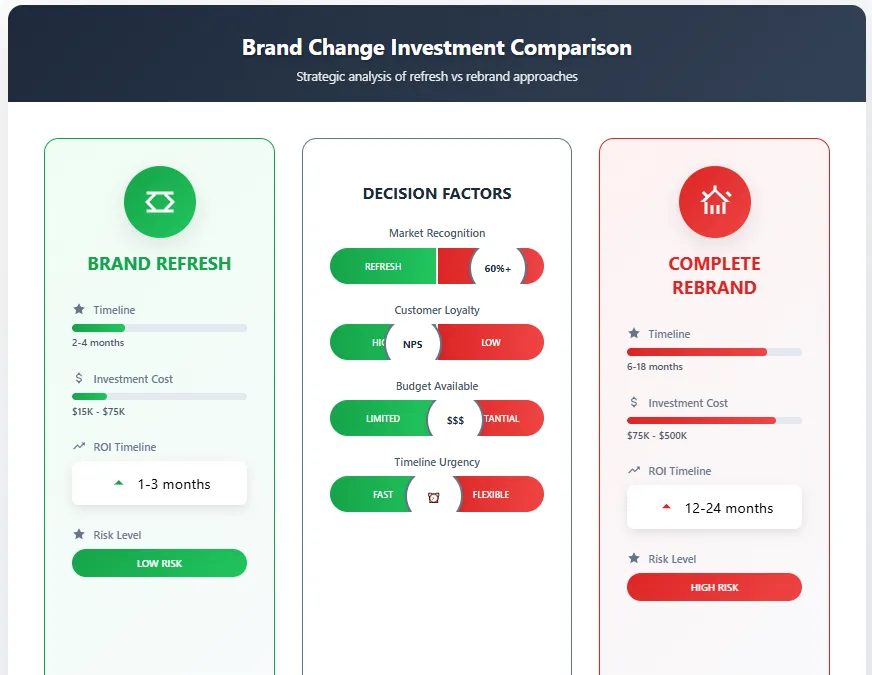
The rebranding vs brand refresh cost differential often determines which strategy businesses can realistically pursue without compromising other operations.
Brand refresh vs rebrand: Making the assessment decision
Objective brand assessment requires quantitative data rather than internal opinions about what needs changing.
Start with brand awareness measurement. Survey target customers about unprompted brand recall, aided recognition, and brand attribute association. Strong brands achieve 60%+ unprompted recall among their target demographic.
Customer loyalty metrics reveal emotional connection strength:
- Net Promoter Score above 50 indicates strong brand affinity
- Customer retention rates exceeding industry averages suggest effective positioning
- Repeat purchase behavior shows brand preference over competitors
- Price sensitivity testing reveals brand equity strength
Financial performance correlation provides crucial insight. Calculate marketing efficiency ratios and customer acquisition costs over 24 months. Declining ROI despite consistent investment often signals brand message effectiveness problems.
Competitive positioning analysis exposes market gaps. Map your brand attributes against top three competitors across price, quality, innovation, and service dimensions. Clear differentiation suggests refresh potential. Commoditized positioning indicates rebranding necessity.
{{mike-quote-2}}
Market share trends indicate competitive effectiveness. Steady or growing share suggests brand resonance with customers. Consistent erosion signals relevance problems that surface changes cannot address.
What role does customer feedback play?
Customer input serves as your most reliable guide for determining appropriate change scope.
Direct feedback through surveys and focus groups reveals specific perception problems. Customers often express confusion about value propositions, frustration with outdated design, or misalignment between brand promise and experience delivery.
Social media sentiment analysis provides real-time brand perception data. Tools like Brandwatch or Mention track brand mentions, sentiment trends, and conversation themes. Negative sentiment spikes may indicate reputation damage requiring comprehensive rebranding.
- Customer service interactions contain valuable brand intelligence. Support representatives hear daily feedback about positioning confusion, service expectations, and competitor comparisons. This frontline data often identifies problems before they appear in formal research.
- Sales team feedback reveals how brand perception affects purchase decisions. If prospects consistently misunderstand your offering or unfavorably compare you to competitors, positioning issues require more than visual updates.
- Exit interviews with lost customers provide honest feedback about brand shortcomings. Former customers offer candid insights about why they chose competitors. Patterns in exit feedback guide intervention strategy selection.

Website analytics reveal customer behavior patterns. High bounce rates on key pages suggest messaging confusion. Low conversion rates despite strong traffic indicate value proposition problems that brand updates cannot solve.
Smart companies analyze these metrics before deciding between brand evolution approaches. Brand refresh vs rebrand choices become clearer when supported by concrete performance data rather than subjective opinions.
How to make the final decision?
Decision frameworks eliminate emotion and politics from brand evolution choices. Systematic evaluation based on business impact rather than personal preferences produces better outcomes.
Define clear business objectives for the next 3-5 years. Are you expanding into new markets, launching products, defending your current position, or recovering from reputation damage? Brand strategy must directly support these goals.
Use this decision matrix to evaluate options objectively:
- Customer Impact Assessment (Weight: 30%)
- Will changes confuse or energize existing customers?
- How will target prospects respond to modifications?
- What is the risk of customer loss during transition?
- Financial Investment Analysis (Weight: 25%)
- Total cost including hidden expenses and timeline extensions
- Expected ROI timeline and measurement criteria
- Opportunity cost of alternative investments
- Risk Evaluation (Weight: 20%)
- Probability of implementation failures or market rejection
- Competitive response potential and market timing
- Internal capability gaps that could compromise execution
- Strategic Alignment Review (Weight: 15%)
- Support for long-term business objectives
- Consistency with company culture and values
- Flexibility for future evolution needs
- Implementation Complexity Assessment (Weight: 10%)
- Resource requirements and timeline realism
- Vendor availability and internal expertise gaps
- Legal and regulatory compliance requirements
Choosing between a rebrand and a simple brand refresh can significantly impact your business’s future. If you're considering a complete brand overhaul, our rebranding services at Celerart are here to guide you every step of the way – https://celerart.com/services/brand-identity/rebranding.
Score each factor 1-10 for both refresh and rebranding options. Calculate weighted totals to identify your optimal approach. This quantitative method reduces bias and provides clear justification for stakeholder communications.
Test your decision with key constituencies including customers, employees, and investors. Gather feedback through surveys, focus groups, or advisory board discussions. External validation often reveals considerations missed during internal analysis.
{{mike-quote-3}}
Create contingency plans for both scenarios. Market conditions change rapidly, requiring strategy adjustments based on early results and competitive responses. Flexible planning enables pivots without starting over completely.
Moving forward with confidence
Brand evolution requires decisive action based on customer research and strategic analysis rather than waiting for perfect conditions.
Successful companies make informed decisions and execute them consistently rather than delaying for ideal market timing. Perfect conditions rarely exist for brand changes, but systematic analysis provides confidence for moving forward.
Your brand evolution starts with honest current-state assessment and clear future vision. Whether you choose refresh or complete rebranding, success depends more on strategic thinking and disciplined execution than change magnitude.
Brands that thrive over decades evolve continuously while maintaining core identity and customer relationships. Today's decision establishes the foundation for sustained market success, customer loyalty, and business growth that compounds over years.







